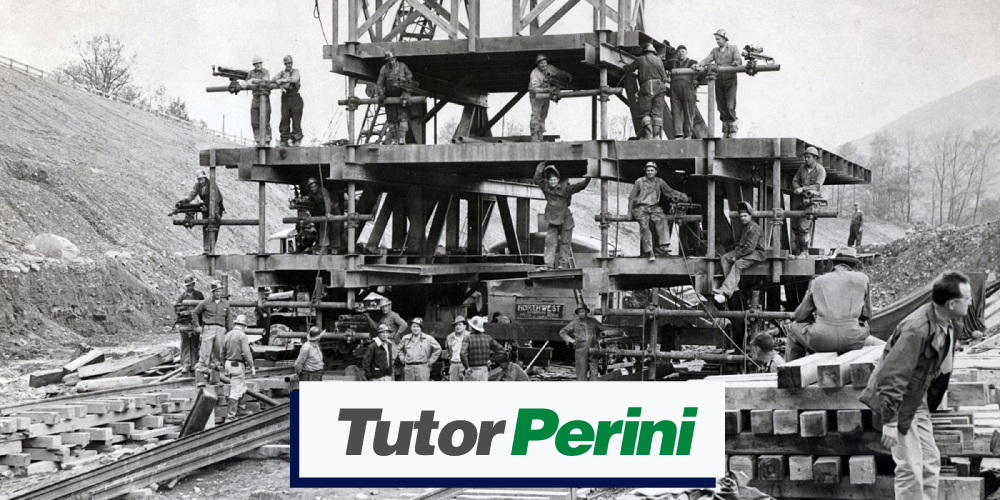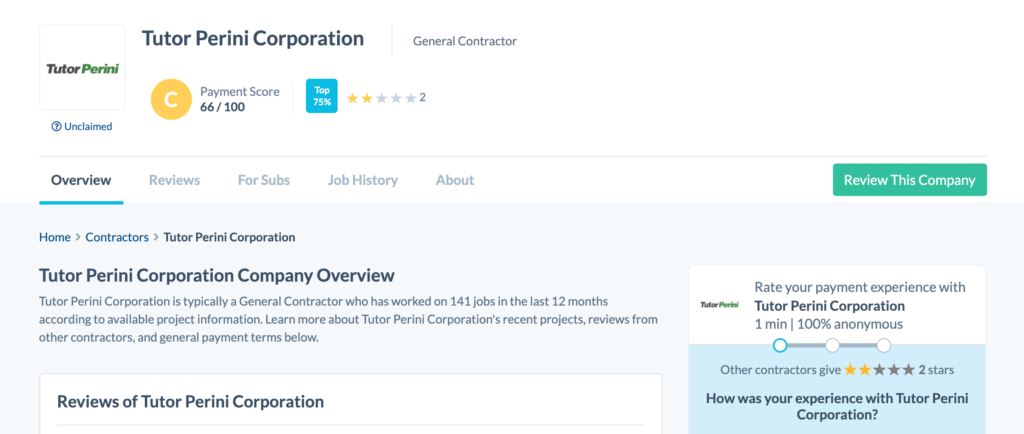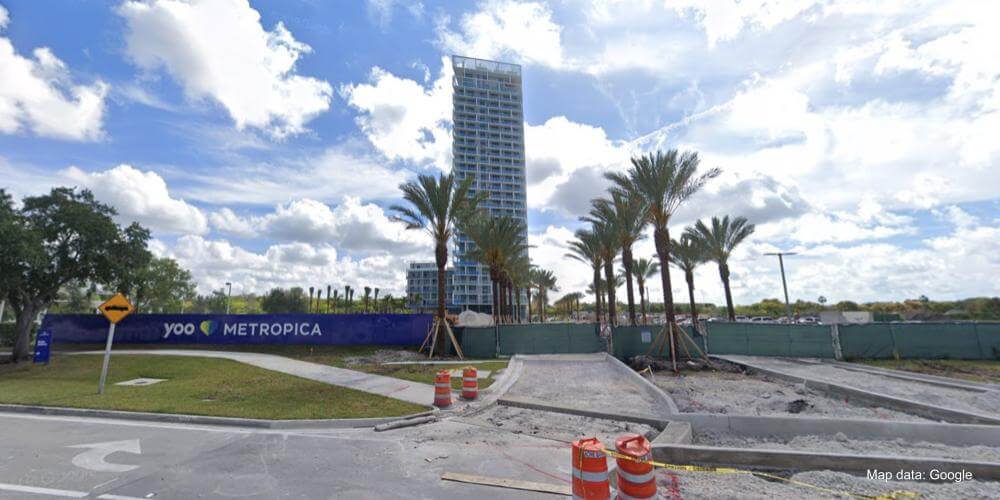
Tutor Perini is one of the country’s largest and most successful general contracting companies, and working with them provides subcontractors with incredible monetary and professional opportunities. However, before you reach out, it’s a good idea to make sure they’re a good fit for your company — and this guide to Tutor Perini for subcontractors can help.
This guide introduces you to Tutor Perini by breaking down their company history, payment history, prequalification process, payment process, and more. Read on to find out how you can approach Tutor Perini armed with the knowledge and confidence to make the best decisions for your company.
About Tutor Perini
Tutor Perini, originally known as the A.G. Tutor Company, was founded in 1949 by Albert G. Tutor. Thanks to a great work ethic and scalability, the company found immediate success all the way up to the year 1963 when Ronald Tutor, Albert’s son, joined the company.
Since then, the company has undergone drastic growth with a history highlighted with partnerships, mergers, and acquisitions.
In 1981, Tutor paired with N.M. Saliba to create the Tutor-Saliba Corporation. After many years of continued success, Ron Tutor turned his attention to the Perini Corporation, a company founded by Bonfiglio Perini all the way back in 1894. Following a recapitalization of the Perini Corporation that started in 1997, Tutor merged with Perini in 2008 to create the company we know today—the Tutor Perini Corporation.
As of 2020, Tutor Perini includes 20+ subsidiary companies throughout the United States and the World.
Tutor Perini pulled in a revenue of $6.4 billion in 2019, placing them in 13th place on ENR’s Top 400 Contractors list for 2020.

Having been an industry leader for decades, Tutor Perini operates in a wide range of markets. They include:
- Aviation
- Bridges & roads
- Commercial
- Education
- Government and military
- Healthcare
- Hospitality and gaming
- Justice
- Manufacturing and industrial
- Mixed-use and retail
- Public assembly and entertainment
- Rail & mass transit
- Recovery/restoration/retrofits
- Residential
- Science and technology
- Sports
- Tunnels/mines/underground
- Water
The services that Tutor Perini brings to those markets include the following:
- Contingency contracting
- Equipment manufacturing
- Federal prime contracting
- Green building
- Preconstruction
- Remonte construction
- Self-perform
- Surety services
- Virtual design & construction
As a testament to their varied list of skill sets and markets, here are a few high-dollar projects that Tutor Perini has participated in over the years:
- CityCenter: Las Vegas, Nevada – $6.4 billion
- California High-Speed Rail: Madera to Fresno – $1.9 billion
- 10 Hudson Yards — New York, New York – $790 million
- MGM Grand at Foxwoods — Mashantucket, Connecticut – $528 million
- Lincoln Financial Field — Philadelphia, Pennsylvania – $388 million
Tutor Perini has offices in Philadelphia, New York, California, Nevada, Florida, Pennsylvania, and Arizona. With their subsidiary companies, their operations span the globe.
Before working with Tutor Perini
Subcontractors should always prequalify new general contractors before working with them. This provides the subcontractor with the chance to learn about a general contractor and determine whether or not the company is a good fit for them.
You can prequalify a general contractor by following these simple steps:
- Look through the GC’s payment history
- Look through the GC’s credit history
- Read reviews from their previous subcontractors
- Examine a sample subcontract from the GC
- Research the GC’s payment process
Doing your research before reaching out to a new general contractor allows you to make sure they can manage the project you’d like to bid on correctly. This includes whether or not you think they can collect funds from the owner and distribute them to their subcontractors in a timely manner.

The best way to begin prequalifying Tutor Perini is to view their payment profile.
Levelset collects data from the nation’s leading general contractors to create insightful and trustworthy metrics that you can use to make informed decisions before you reach out to them.
Based on their recent payment history compared with tens of thousands of other GC’s across the country, Tutor Perini has a pay score of 57/100, which gives them a C rating. Pay score refers to how quickly or how slowly a general contractor pays their subs and suppliers.
Subcontractors who have worked with a general contractor in our database can also leave anonymous reviews to share their experiences.
Unfortunately, the only two reviews on Tutor Perini’s payment profile are negative, leaving them with a rating of 1 star out of 5. The 1-star reviews are as follows:
- “Tutor Perini rejects billings without notification, has little to no communication and fails to pay timely.”
- “They failed to pay”
Recent payment disputes
For a deeper dive, you can take a look at Tutor Perini’s recent pay history. Since November of 2019, there have been 14 mechanics liens filed on projects that Tutor Perini participated in. As of right now, none of them appear to have been released.
Each mechanics lien on record was filed by a contractor who was hired directly by Tutor Perini.

Metropica Tower One
The latest mechanics lien of note was filed by Tutor Perini on September 14th, 2020. Along with 15 other contractors, Tutor Perini claimed $4.3M in unpaid wages from the owners of the massive Metropica development in the Florida Everglades.
As that example illustrates, the general contractor isn’t always at fault when subcontractors go unpaid. The construction industry is notorious for cash flow problems and slow payment no matter who the general contractor is.
That’s why you should never write off a general contractor when you encounter red flags in their payment history. Be sure to look into each dispute and consider the context of the payment problem before you jump to conclusions.
Tutor Perini’s prequalification process
After you prequalify Tutor Perini, it’s time to go through their prequalification process. General contractors prequalify new subcontractors to make sure they have the finances and track record to reliably finish a project.
To get prequalified to work with Tutor Perini, the first thing you’ll need to do is go to the Subcontractors Page on their website.
On the Subcontractors Page, you’ll find links to each of the Tutor Perini entities that you can prequalify with: Tutor Perini Civil, Tutor Perini Building Corp., Rudolph & Sletten Inc., Roy Anderson Corp., and Perini Management Services.
For this guide, we’ll follow the processes for Tutor Perini Building Corp.
In order to prequalify with Tutor Perini Building Corp., you’ll need to contact one of their regional offices:
Fort Lauderdale
One East Broward Boulevard, Suite 1300
Fort Lauderdale, FL 33301
Telephone: 954-733-4211
Fax: 954.485.9688
Southwest Region
2955 North Green Val
Telephone: 702-792-9209
Fax: 702-650-4395
5055 E. Washington Street, Suite 210
Phoenix, AZ 85034
Telephone: 602-256-6777
Fax: 602-258-2454
New York
360 West 31st Street, Suite 1104
New York, NY 10001
Telephone: 646-569-4200
Philadelphia
One Logan Square
130 North 18th Street, Suite 1500
Philadelphia, PA 19350
Telephone: 610-668-4100
Fax: 610-660-7417
You will find the Contractor Questionnaire that Tutor Perini uses to prequalify new subcontractors. According to the Questionnaire, you need to provide Tutor Perini with the following information for prequalification:
- Your company representative’s name and contact information
- Your company’s tax ID
- Info about your company’s officers, partners, or proprietors
- Details about your company’s operations (bonding info, equipment leasing, backlogs)
- Your company’s tax information
- Your five largest contracts
- Your five most used subcontractors
- Three specialty trades you’ve worked with
- Information regarding your key personnel
- Life insurance information for officers/key personnel
- Business insurance information
- Your company’s subsidiaries and affiliates
In addition to that, you’ll need to attach the following information to your application:
- Copies of your last three fiscal statements
- A current interim financial statement for works in progress
- A current financial statement for all indemnitors
- A bank line of credit agreement
- A business plan
- A buy/sell agreement
- A copy of subcontract agreement
- A certificate of insurance
- The resumes of your key employees and owners
- Letters of recommendation for your company
To be added to Tutor Perini’s subcontractor/supplier/manufacturer database, send this completed form to prequalification@tutorperini.com.
If you’re an M/W/DBE business, refer to this form and fill it out completely to be included with your application for prequalification.
After you complete the questionnaire and get in contact with your regional procurement office, you’ll soon hear back from Tutor Perini as to whether or not you’ve been successfully prequalified. From that point onward, you can bid on Tutor Perini projects.
Tutor Perini’s payment process
Now that you have an idea of what Tutor Perini’s prequalification process looks like, you can turn your attention to their payment process.
This section breaks down payment with a large general contractor into four sections: before the job begins, applying for your first payment, applying for progress payments, and applying for your final payment.
Before work can begin
Although you provided Tutor Perini with a heap of information to prequalify, you’ll need to give some additional pieces of information after you win a bid and before you step foot on the job site.
This will most likely include:
- Your W-9 form
- Insurance certificates
- The subcontract
- Any bonding information related to the project
Apply for first payment
Applying for first payment with a general contractor like Tutor Perini usually involves the AIA billing forms. These include the G702 application for payment and the G703 continuation sheet.
Payment applications, or pay apps, are generally due by the 20th of each month. Make sure your pay apps, as well as any other billing documents, you send are filled out completely and 100% accurate to avoid any payment delays.
Apply for progress payments
To apply for progress payments with Tutor Perini, you’ll most likely need to supply an accurate pay app as well as an up-to-date schedule of values.
Progress payments are a great option for both subcontractors and general contractors because they increase transparency on the job site and work to regulate cash flow. This cuts down the chances of a payment related hiccup over the course of the project.
Apply for final payment
As the end of the construction project approaches, it’s time to start thinking about collecting final payment. Final payment with a large general contractor involves sending your final pay app along with the requested close-out documents.
Close-out documents are used to make sure a project has been finished completely and up to spec. Some common documents in a company’s close-out process include:
- A punch list
- Lien waivers
- A certificate of occupancy
- Consent of surety
- Inspection certificates
It’s a best practice to review all the documents you encounter with a construction attorney to make sure you get the most favorable payment terms after a construction project ends.
3 tips to get paid with Tutor Perini
If you take the time to learn the ins-and-outs of Tutor Perini’s payment practices, then you’re off to a great start. However, the construction industry is volatile, and payment issues could arise no matter which precautions you take. To take things a step further, incorporate these three practices into your payment routine on every construction project. That way, you’re setting yourself up to collect payment and increase communication no matter what happens on the job.
1. Send a preliminary notice on every project
Sending a preliminary notice greatly increases your chances of getting paid on time. That’s because they let the GC and owner know who you are and what you’re doing on the project, which keeps your invoices fresh in their minds.
Additionally, sending a preliminary notice is a common requirement to file a mechanics lien. Failure to send one could leave you with few recovery options should you go unpaid.
2. Always send visibility documents
Visibility documents increase communication and transparency on the job site. Big projects tend to get cluttered with paperwork from all the participating subcontractors and suppliers, and sometimes an invoice will get buried underneath everything.
Visibility documents like the notice of intent to lien, invoice reminders, and demand letters combat that tendency—and they also have the potential to spur a payment.
3. Maintain your right to file a lien
The mechanics lien is one of the most effective tools that contractors and suppliers have at their disposal when it comes to debt recovery. Mechanics liens encumber the property, making it difficult to sell until the debt is paid.
Each state has its own mechanics lien laws that you must follow in order to file a lien. However, they generally include sending a preliminary notice, keeping to various deadlines, and having a valid contractor’s license for the work you performed on the project.
